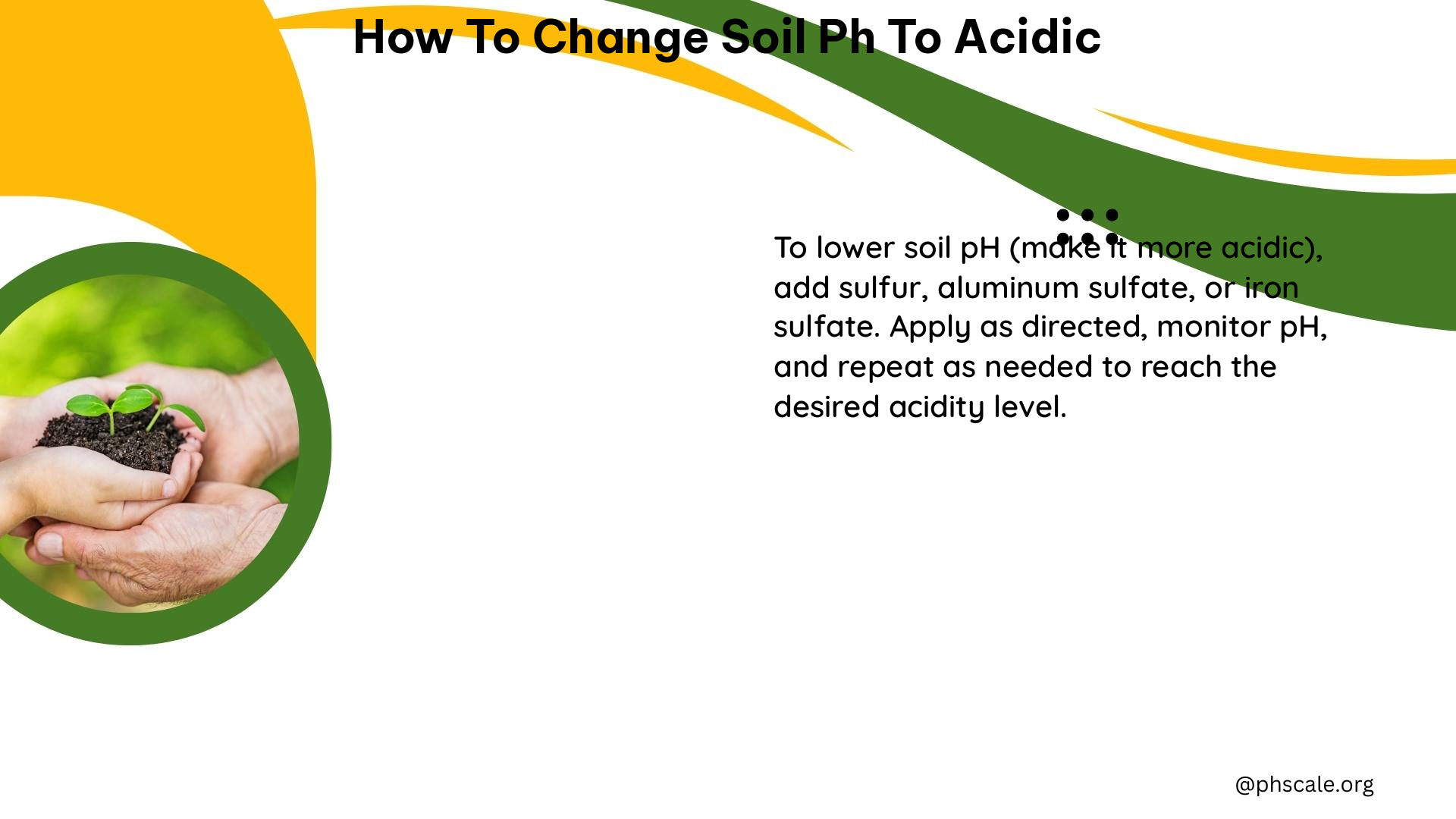Changing the soil pH to acidic is a crucial step for gardeners and landscapers who want to create the ideal growing conditions for acid-loving plants. By understanding the factors that affect soil pH and the various methods to lower it, you can effectively transform your soil and unlock the full potential of your garden. In this comprehensive guide, we’ll explore the best practices and techniques to change soil pH to acidic.
Factors Affecting Soil pH
Before delving into the methods to lower soil pH, it’s essential to understand the factors that influence the acidity or alkalinity of your soil. These include:
- Parent Materials: Soils formed from basic rocks, such as limestone, tend to have higher pH values, while those formed from acidic rocks have lower pH levels.
- Rainfall: High rainfall can leach away basic nutrients, replacing them with more acidic elements like aluminum and iron, making the soil more acidic over time.
- Fertilizers: The use of ammonium and urea-based fertilizers can speed up the development of soil acidity.
- Organic Matter: The decomposition of organic matter, such as compost and decaying plant material, can contribute to the overall acidity of the soil.
Methods to Lower Soil pH

There are several effective methods to change soil pH to acidic. Let’s explore the most common and reliable techniques:
- Aluminum Sulfate:
- Aluminum sulfate is a quick-acting solution that instantly lowers the soil pH due to the acidity produced when the aluminum dissolves.
-
However, it’s important to be cautious with this method, as it can cause leaf burn if not washed off plant leaves immediately after application.
-
Sulfur:
- Elemental sulfur is a slower-acting option that requires time for conversion to sulfuric acid, with the aid of soil bacteria.
-
The conversion rate depends on factors such as the fineness of the sulfur, soil moisture, temperature, and the presence of beneficial bacteria.
-
Iron Sulfate:
-
Iron sulfate is another material that can be used to lower soil pH, often in combination with sulfur.
-
Organic Matter:
- Adding high-quality compost and other organic matter to the soil can help maintain a self-sustaining acidic environment.
- As the organic matter decomposes, it releases acids that contribute to the overall acidity of the soil.
Application and Precautions
When changing soil pH to acidic, it’s essential to follow best practices to ensure the process is effective and safe for your plants:
- Soil Testing: Determine the need for acidifying materials by testing the soil pH to establish a baseline.
- Timing: Apply acidifying materials from spring to autumn for best results, as they take longer to work in cold soil.
- Quantities: Use the correct quantities of acidifying materials based on your soil type (sandy, clay, etc.) and organic matter content.
- Cautious Application: Avoid over-application, as it can damage plants. Make multiple small additions over several months to achieve the desired pH level.
Best Practices
To ensure the successful and sustainable lowering of soil pH, consider the following best practices:
- Choose the Right Acidifying Material: Select the most appropriate material based on your specific needs and soil conditions.
- Incorporate Acidifying Materials: Mix the materials well into the soil to ensure maximum contact and effectiveness.
- Monitor and Adjust: Continuously monitor soil pH and adjust the application of acidifying materials as needed to maintain the desired level.
Additional Tips
- Native Plants: Consider planting native plants that are adapted to your local climate and soil pH to minimize the need for significant pH changes.
- Soil Food Web: Focus on building a healthy soil food web with beneficial microorganisms to support a self-sustaining acidic environment.
By following these guidelines and techniques, you can effectively change your soil pH to acidic, creating the ideal conditions for your acid-loving plants to thrive. Remember to always test your soil, apply the appropriate materials, and monitor the results to ensure the long-term success of your gardening endeavors.
References
- Clemson University. (2012). Changing the pH of Your Soil. Retrieved from https://hgic.clemson.edu/factsheet/changing-the-ph-of-your-soil/
- Epic Gardening. (2022). How To Lower Soil pH Or Raise Soil pH. Retrieved from https://www.epicgardening.com/how-to-lower-soil-ph/
- John & Bob’s. (2020). How To INCREASE Soil Acidity Naturally (4 Simple Steps!). Retrieved from https://www.youtube.com/watch?v=H0_zj2XM2iQ
- Royal Horticultural Society. (n.d.). Acidifying soil. Retrieved from https://www.rhs.org.uk/soil-composts-mulches/acidifying-soil.
